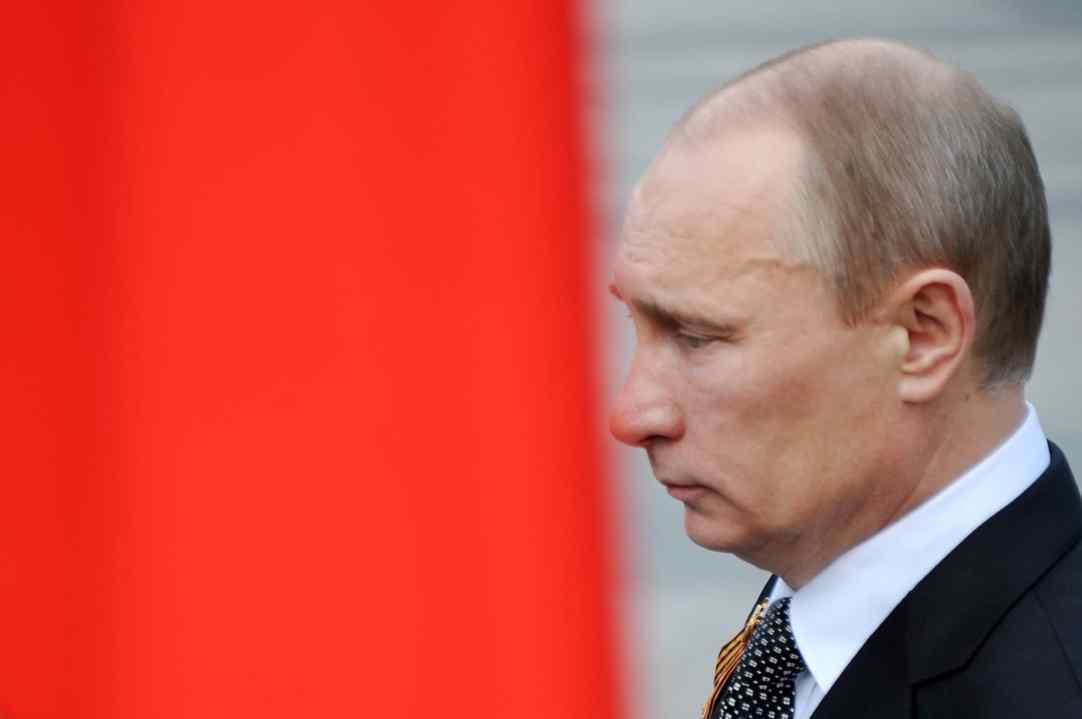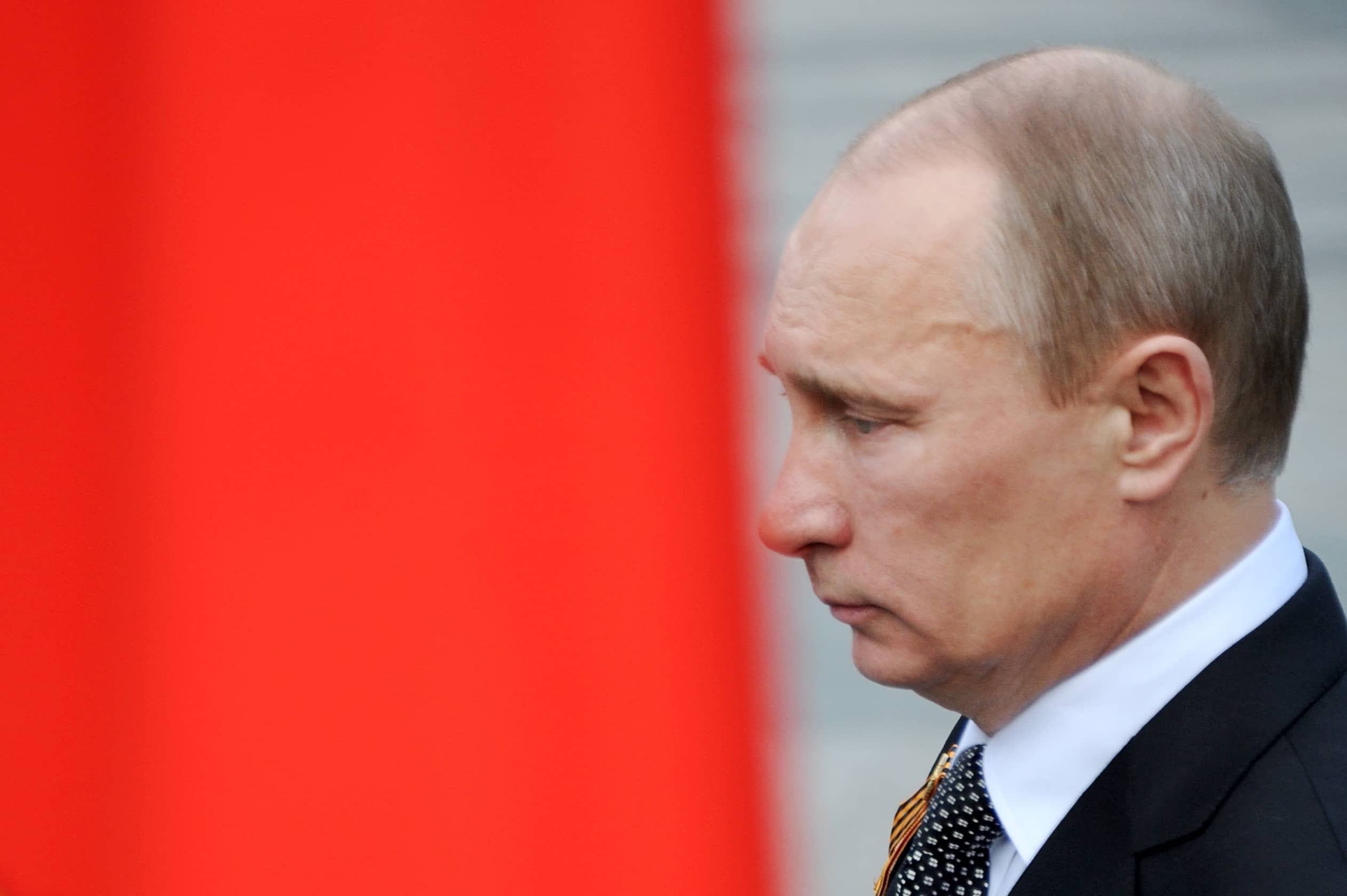Vladimir Putin’s message was as clear — and familiar — as his method. The Kremlin has begun another major build-up of troops along Ukraine’s border. The reason? Retaliation: last month, president Volodimir Zelenskiy flew to Washington to renew his plea that Ukraine be allowed to join Nato.
The massive show of force — the second this year — prompted US Secretary of State Antony Blinken to warn his European allies that Russia showed dangerous signs of invading its smaller southern neighbour. ‘Our concern is that Russia may make the serious mistake of attempting to rehash what it undertook back in 2014 when it amassed forces along the border, crossed into sovereign Ukrainian territory and did so claiming falsely that it was provoked,’ Blinken told reporters on Friday. ‘We don’t have clarity into Moscow’s intentions, but we do know its playbook.’
Kremlin spokesman Dmitry Peskov insisted on Friday that Russia ‘does not pose a threat to anyone’ and accused Nato countries of taking ‘provocative actions’. But satellite images tell a different story. Russia has deployed a major movement of ground troops, armoured units, tanks and self-propelled artillery massing outside the town of Yelnya, close to Russia’s borders with Belarus and Ukraine.
Despite the remoteness of Ukraine’s chances of joining Nato, Putin and his inner circle remain very publicly obsessed with their neighbour
The last time Putin pulled the same manoeuvre back in March, his evident intention was to send a strong message to the incoming Biden administration that he would not tolerate western interference in Ukraine — and, perhaps more importantly, that he refused to be ignored. During his campaign, Biden promised to make Russia pay for misdeeds such as the alleged interference in the 2016 and 2020 US presidential elections, the attempted assassination of opposition politician Alexei Navalny, and cyber hacks on US strategic infrastructure.
After a few weeks of furore from western capitals, Putin stood down his troops. But that spring sabre-ratting seemed to have worked. He got the one-on-one meeting with Biden in Geneva in June he craved. And Biden reluctantly dropped planned sanctions against Gazprom’s almost-built Nord Stream 2 gas pipeline in the face of European energy shortages.
So why has Putin chosen this moment to rattle the sabre once again? One proximate cause is the escalating refugee crisis on the Belarus-Polish border. Warsaw has deployed troops against thousands of migrants who have been officially encouraged by Putin’s ally Alexander Lukashenka to try to break into the EU. Though Polish Prime Minister Mateusz Morawiecki this week blamed Putin for ‘orchestrating’ the crisis, it’s not clear whether the idea of weaponising migrants — in much the same way as Turkey has in recent years — came from the Kremlin or from Lukashenka. But what is clear is that Putin has sent strong messages of support for the regime in the form of nuclear-capable strategic bombers that have been deployed to patrol Belarusian airspace.
But a more likely reason for the latest show of strength is a combination of anger over Zelensky’s visit — and the upgraded US military support for Ukraine it brought — and a new sense of self-confidence in the Kremlin. The Biden administration’s decision to waive sanctions on Nord Stream 2 was a major strategic victory for Putin — not just because it heralded an increased energy dependence by the EU on Russia but also because it stoked frustration between the EU, Kiev and Washington. Spiking natural gas prices emphasised how much Europe needs Russian gas as it struggles to eliminate coal-fired power stations to meet climate change goals.
Domestically, September’s parliamentary elections returned the ruling pro-Kremlin party with a symbolically important two-thirds constitutional majority in the Duma. A new wave of political repressions over the summer effectively crushed Alexei Navalny’s political organisation, who this time last year seemed as if he could pose a serious threat to the Kremlin’s political hegemony. Navalny is now in prison and his supporters are under extreme pressure. The Nobel Peace Prize went to a Russian reporter rather than the jailed Navalny, sparing the Kremlin any international embarrassment. And the Kremlin also tightened open access to the internet inside Russia by forcing Google and Apple to abide by local laws. All in all, according to Eugene Rumer and Andrew S. Weiss of the Carnegie Endowment for International Peace, ‘notwithstanding the conventional wisdom about the effects of the pandemic and domestic political turbulence, 2021 has actually been a pretty good year for Vladimir Putin.’
The only thing that’s gone really wrong is that the Kremlin has failed to curb US support for Ukraine, now one of the world’s biggest recipients of American military aid. In September, Biden confirmed a new $60 million package for Ukraine that includes Javelin anti-armour systems, part of the $2.5 billion that the United States has committed Ukraine’s defence since 2014. ‘President Zelenskiy and Ukraine have gotten as much, if not more, attention from this administration than any other European country,’ a senior Biden administration official told reporters at the time. Ukraine’s security capabilities in intelligence, cyber, and political subversion have also benefitted from generous help from the United Kingdom and other western countries. Even Turkey, a sometime ally of Russia’s has supplied armed unmanned aerial vehicles.
The one major issue that Zelenskiy failed to get any traction on was his plea for Ukraine to be allowed to join Nato, which was firmly rejected by Biden. Joining Nato requires applicants to fulfil daunting conditions for membership such as rule of law reforms, defence sector modernisation, a transparent, stable economy — and most importantly of all, the absence of any frozen conflicts. In 2014 Ukraine lost the Crimea to Russia and two Eastern provinces remain under the control of Russian-backed separatists.
Yet despite the remoteness of Ukraine’s chances of joining Nato, Putin and his inner circle remain very publicly obsessed with their neighbour. In July, Putin published a long treatise arguing that Ukraine ‘is not and has never been an independent state’, that Ukraine is an ‘inalienable part of Russia’ that lacks a distinct ethnic identity, culture, religion, and language, that Ukraine has ‘always prospered when part of Russia’ and suffered when not, and that Ukraine’s independence has always been inspired and sponsored by ‘enemies of Russia’. It is an essay designed to rationalise Russia’s interference in Ukraine.
Doubtless, an all-out invasion of Ukraine would severely damage Putin, provoking harsh economic and probably military responses from Nato. But as Putin’s precipitous decision-making in 2014 showed, he is not always the cold, calculating strategist that the West imagines. His world view — at least if his treatises and speeches are anything to go by — is paranoid, fearful of encirclement, and based on grossly false assumptions about the nature of Ukrainian statehood and national identity. Add a powerful and expensive new military and a total absence of checks and balances on Putin’s personal power and you have a dangerously unstable combination.








Comments